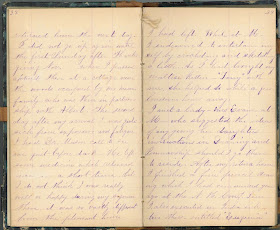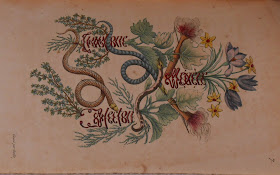 "I had Dr. Mason call to see me first--before dark--He left some medicine which relieved me in a short-time, but I do not think I was really well or happy during my sojourn there. It was so vastly different from the pleasant home I had left. While at Mo__ I endeavored to entertain myself by crocheting and sketching a little. As I had brought my maltese kitten--'Tony' with me, she helped to while a few lonesome hours away."
"I had Dr. Mason call to see me first--before dark--He left some medicine which relieved me in a short-time, but I do not think I was really well or happy during my sojourn there. It was so vastly different from the pleasant home I had left. While at Mo__ I endeavored to entertain myself by crocheting and sketching a little. As I had brought my maltese kitten--'Tony' with me, she helped to while a few lonesome hours away."This quotation appears in diary we just acquired by Harriet Burleigh Janes. Janes was a Laconia, New Hampshire, native who wrote fiction under the name Effie Ray. Born May 27, 1845, Harriet Burleigh was writing and illustrating hand-sewn miniature books by the age of seven. At 18, her work was in print; A Letter From Effie Ray was published in the Trumpet and Freeman: A Universalist Magazine in 1863. Over the next several years, her short stories appeared in The Yankee Blade and The American Union. She was working on a novel, Leander, or The Haunted Manor, at the time of her death at age 30.
The diary will join her papers housed in Rauner Library. The collection includes her miniature books, drawings and other manuscripts. Perhaps the most curious part of the collection is the "spirit writings," many purportedly by Harriet Janes, that her grieving family received after her early death.
To learn more about this little known writer, ask for MS-844.



